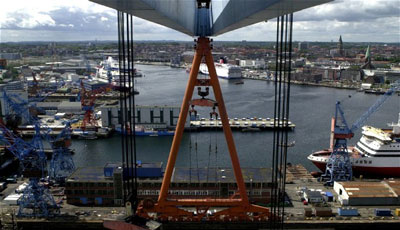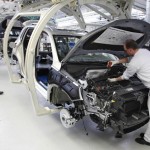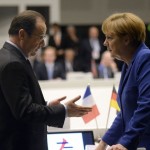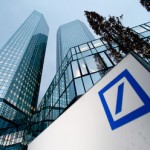German Industrial Output Drops

German industrial production plunged in May at its sharpest pace in more than two years, suggesting that Europe’s largest economy struggled to expand in the spring after a robust first quarter.
Industrial production dropped 1.8% on a seasonally adjusted basis, according to the country’s statistics agency Destatis. That was well below expectations of a flat reading in a survey of economists by The Wall Street Journal. The April figure was also lowered, to a decline of 0.3% from a previously released rise of 0.2%.
As a result, economists at Barclays now expect German gross domestic product to have expanded just 0.1% on a quarterly basis between April and June. That translates into annualized growth of around 0.4%, a significant weakening from the first quarter’s 3.3% annualized rate.
Without a vibrant Germany, the 18-member euro zone will struggle to expand. Germany makes up around 30% of the bloc’s GDP, and the region’s second-biggest economy, France, has struggled in recent quarters. Euro-zone output grew at a 0.8% annualized rate during the first quarter, but without Germany it would have contracted a bit.
Spanish production also fell in May from the previous month, by 0.7%, bringing the annual rate of growth down to 2.5% from just over 4%, according to BNP Paribas. Spain is the euro zone’s fourth-largest economy.
“There is growing evidence that the euro-zone’s economic recovery has slowed alarmingly sharply over the last few months, suggesting that the [European Central Bank] has more work to do to tackle the risk of deflation in the currency union,” analysts at consultancy Capital Economics wrote in a research note.
Deflation refers to a persistent drop in consumer prices that cripples spending and investment while making it harder for households and businesses to service debts. Annual inflation in the euro zone was just 0.5% in May, far below the ECB’s target of just under 2%.
The ECB held interest rates and other policies unchanged last week, as officials wait for interest-rate cuts and other stimulus measures unveiled in June to take effect.
Some second-quarter weakness had been expected in Germany. Growth in the early part of the year was buoyed by an unusually warm winter that boosted construction and other weather-sensitive sectors. That essentially borrowed from activity that would have normally occurred in the spring.
“After a strong first quarter, production has temporarily weakened in recent months,” Destatis said, adding that the sector is likely to regain strength later this year after a limp second quarter.
Indeed, despite reducing its second-quarter forecast, economists at Barclays expect faster GDP growth in the second half of the year.
“The overall level of industrial activity is still strong and the safety net for the German industry, richly filled order books and low inventories, is still boding well for the coming months,” noted ING Bank economist Carsten Brzeski.
The production figures follow manufacturing orders data on Friday, which showed a fall of 1.7% on the month, with a drop in both domestic and foreign orders. Manufacturing orders are often a precursor of future industrial output.
May manufacturing production was down 1.6% from April, while construction output fell 4.9%.\
Source: wsj





























